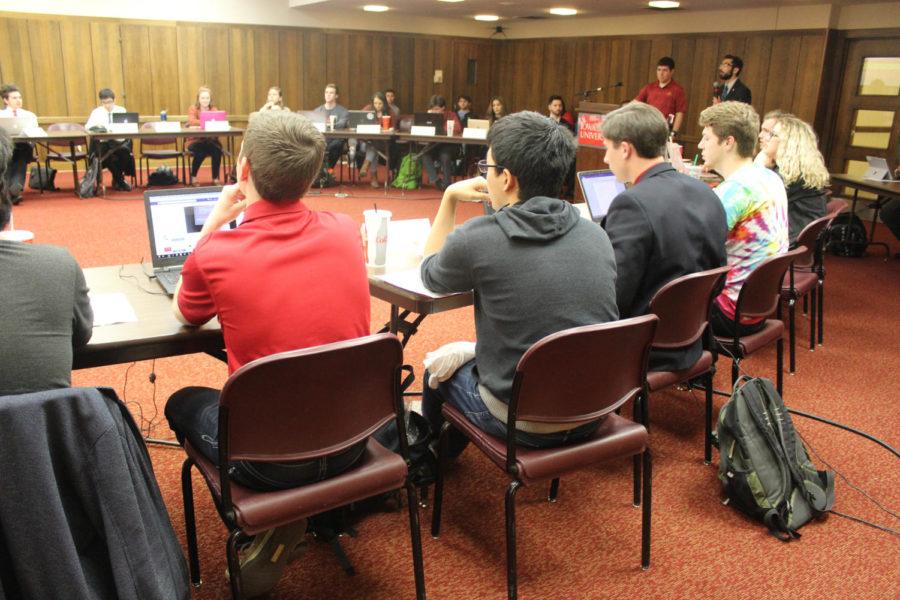Need to Know: Student Government
Kennedy DeRaedt/Iowa State Daily
Iowa State University Student Government meet on Feb. 22, 2017 in the Campanile Room in the Memorial Union.
July 10, 2018
Iowa State Student Government serves to make campus a better, more welcoming place for students from all different backgrounds and experiences.
Despite Student Government’s best efforts, many on campus still don’t know exactly what it is or think it is not accessible to them. However, with the right knowledge, those students can find out what, where and how Student Government works on top of how to influence change themselves.
Here is what you should know about Student Government.
What is Student Government?
Student government is made up of other students voted in by or appointed into positions by their fellow peers.
According to their website, Student Government “serve[s] students and improve[s] the student experience through advocacy and empowerment.” Student Government is the student organization which represents all students at Iowa State University.
To do this, we work with other student organizations, ISU administration, the Ames community, the state legislature, and the Board of Regents to accomplish initiatives, set policies, and make sure students have a voice.
Similar to our governments on the state and federal levels, Student Government is made up of three branches including the executive, judicial and legislative branches.
The executive branch:
The executive branch is made up of the president, vice president and executive cabinet. The president, who serves a one year term, will be Iowa State Senior Julian Neely, and the vice president will be Juan Bibiloni, a junior in mechanical engineering.
While the president and vice president were elected into their positions, they appoint an executive council who help progress campus initiatives.
The legislative branch:
All power within the legislative branch is held by the senate.
According to their website, “Members of the Senate are elected for one year terms. Elections are held in March, with the new Senate taking over legislative powers in April. Senate members allocate student fee money by passing bills. They also ratify contracts and agreements negotiated by the SG by a two-thirds vote.”
Students are encouraged to talk to their representatives and go to public meetings held every Wednesday at 7 p.m. in the Campanile Room of the Memorial Union.
The judicial branch:
The judicial branch consists of a nine-member supreme court. Much like the real supreme court, judges, undergraduate or graduate students, are appointed by the student body president and then approved by the senate.
These appointees hold their position until they graduate, resign or, in rare cases, are kicked out of school for breaking university rules.
The supreme court typically rules on the powers of the Student Government Senate based on their interpretations of the Student Government constitution.
To get more information about Student Government you can email them at [email protected] or you can visit their Iowa State website, which houses all of their governing documents, membership and principles.







